Volume of Livestock Production
Total livestock production in Oriental Mindoro continued to dive during the fourth quarter of 2024 with an estimated 2,157.26 metric tons. A decline of 80.0 percent compared to the 10,812.47 metric tons produced in the fourth quarter of 2023. The decrease in production was attributed to the decline in the production of hogs.
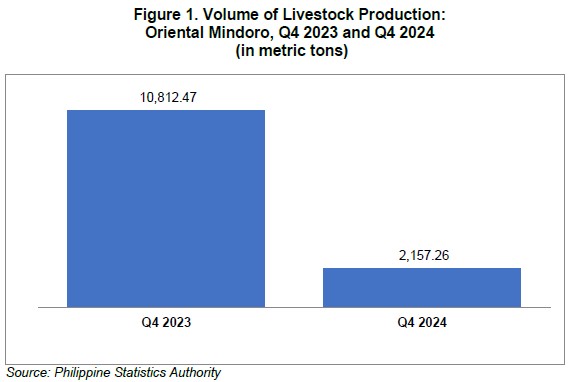
Volume of Production by Animal Type
Hog production in the province continued to plummet by 83.7 percent in the fourth quarter of 2024, reaching an estimated 1,689.68 metric tons (liveweight). This represents a significant decline of 8,693.3 metric tons compared to the previous year's output of 10,382.93 metric tons (liveweight). Despite this decrease, hogs still account for a substantial 78.3 percent share of the province's total livestock production. (Figure 2)
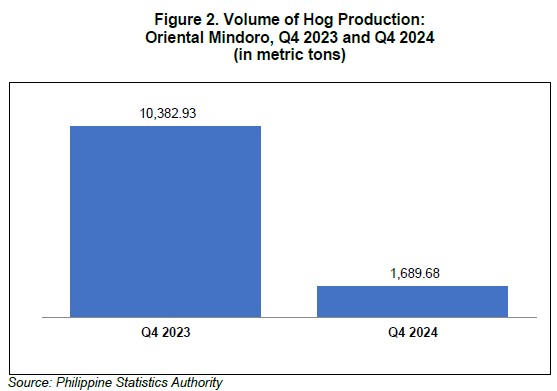
Cattle production increased by 11.2 percent in the fourth quarter of 2024, with an estimated 370.78 metric tons (liveweight). This represents an increase of 37.3 metric tons compared to the previous year’s production of 333.49 metric tons (liveweight). This animal type contributed 17.2 percent to the province's total livestock output. (Figure 3)
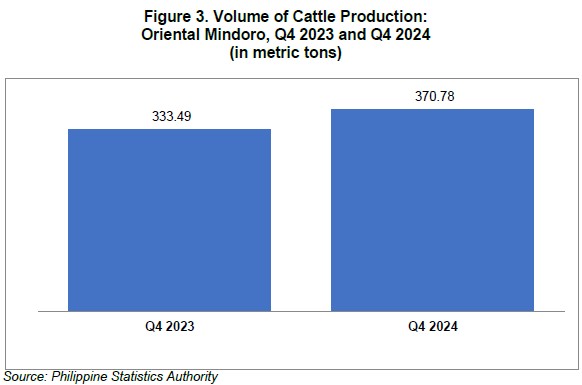
Carabao production bounced back by 0.8 percent in the fourth quarter of 2024, with an estimated 86.76 metric tons (liveweight). This represents an increase of 0.7 metric tons compared to the previous year’s production of 86.04 metric tons (liveweight). This animal type contributed 4.0 percent to the province's total livestock output. (Figure 4)

Goat production increased by 0.4 percent in the fourth quarter of 2024, with an estimated 10.04 metric tons (liveweight). This represents an increase of 0.4 metric tons compared to the previous year’s production of 10.01 metric tons (liveweight). This animal type contributed 0.5 percent to the province's total livestock output. (Figure 5)
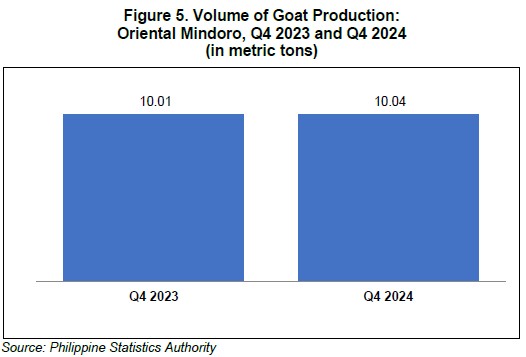
Volume of Poultry and Eggs Production
In the fourth quarter of 2024, Oriental Mindoro’s estimated total poultry production reached 2,882.84 metric tons. This represents a significant increase of 2,181.76 metric tons compared to the 701.08 metric tons produced during the same period in 2023. This growth was primarily driven by a substantial increase in chicken production, which accounted for 99.0 percent of the province's total poultry output. (Figure 6)
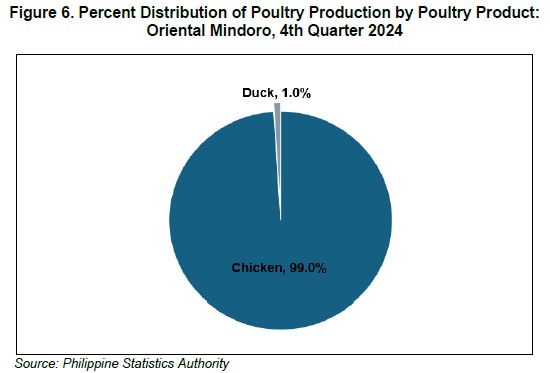
Oriental Mindoro's total egg production was estimated at 1,049.56 metric tons in the fourth quarter of 2024. This represents a 30.7 percent increase, or 246.72 metric tons compared to the 802.84 metric tons produced during the same period of 2023. This
growth is primarily driven by the rise in chicken egg production, which accounts for 96.2 percent share of the province's overall egg output. (Figure 7)
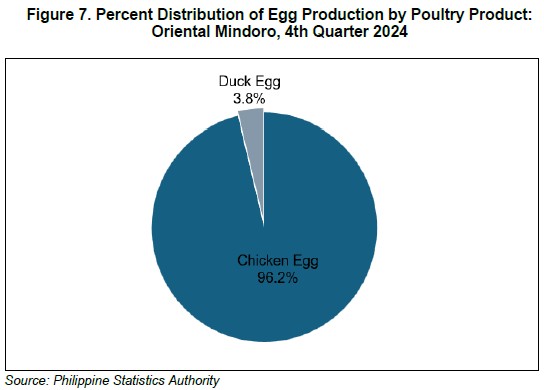
(SGD) CHARLYN ROMERO-CANTOS, PhD
(Chief Administrative Officer)
Officer-in-Charge
Oriental Mindoro Provincial Statistical Office
HTD/HBLDL
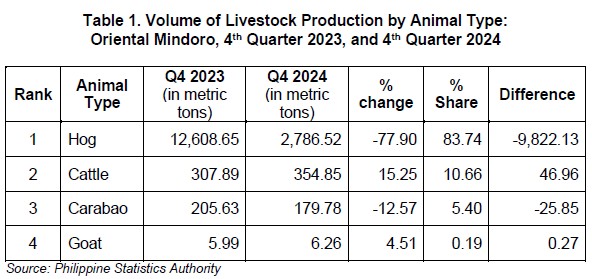
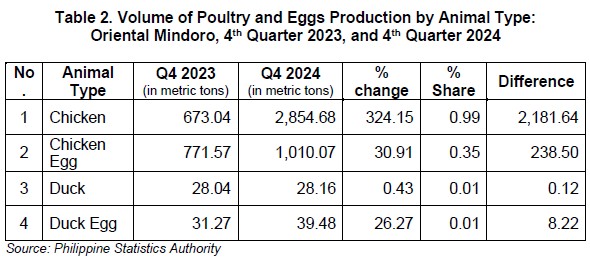
TECHNICAL NOTES
The Livestock and Poultry Situation Report presents the data on volume of production of livestock, poultry and poultry products derived from the Commercial/Backyard Livestock and Poultry Survey conducted by the Philippine Statistics Authority and collected administrative data from Compilation of Data from Slaughterhouses and Poultry Dressing Plants (CDSPDP).
DEFINITION OF TERMS
Livestock is commonly defined as domesticated animals raised in an agricultural setting to produce labor and commodities such as meat, eggs, milk, fur, leather, and wool. Livestock in this publication include hogs, cattle, goat and carabao.
Poultry can be defined as domestic fowls raised to produce meat or eggs. The poultry in this publication includes chicken and duck.
Volume of Production is the total weight in metric tons of the locally raised livestock and poultry (and poultry products) disposed for slaughter which includes animals shipped-out of slaughter.

